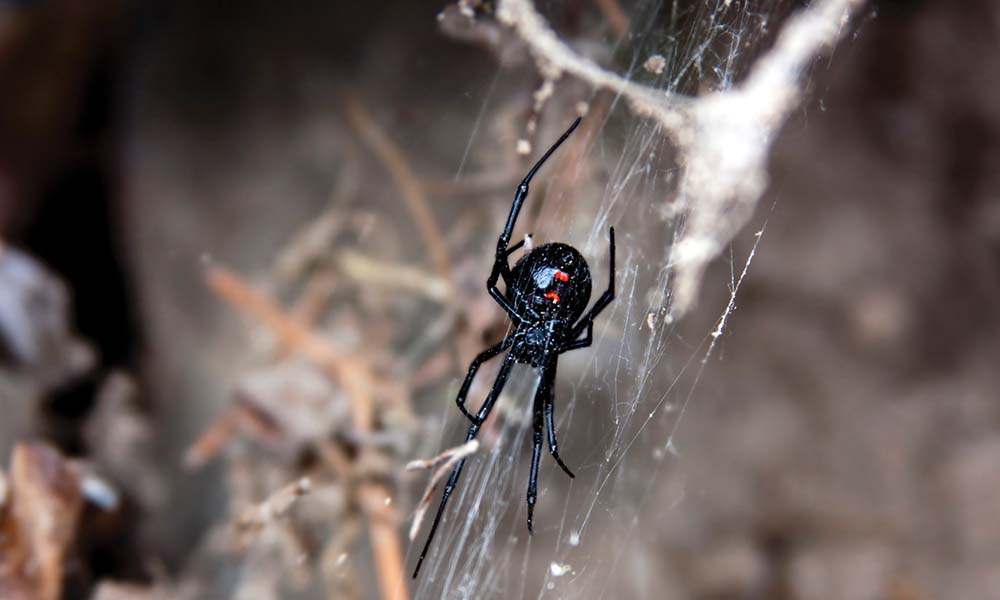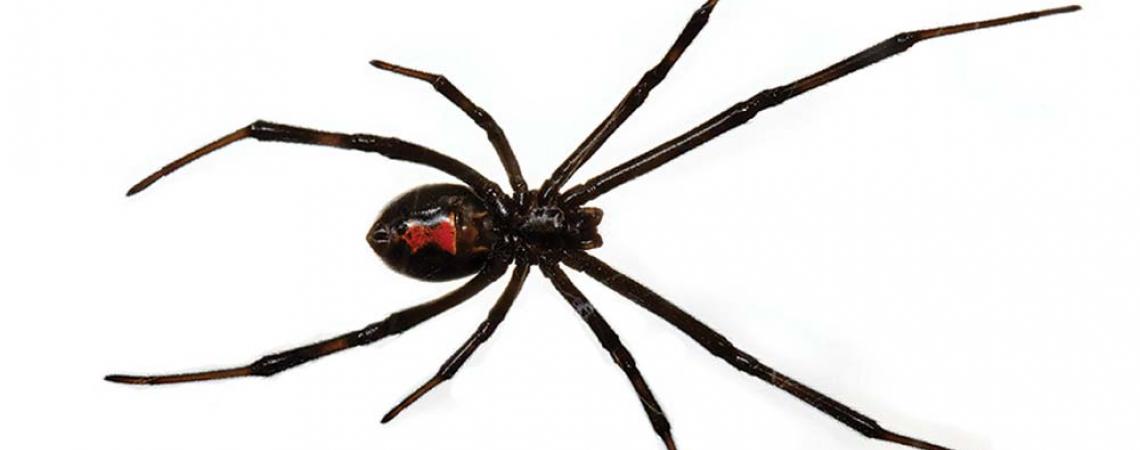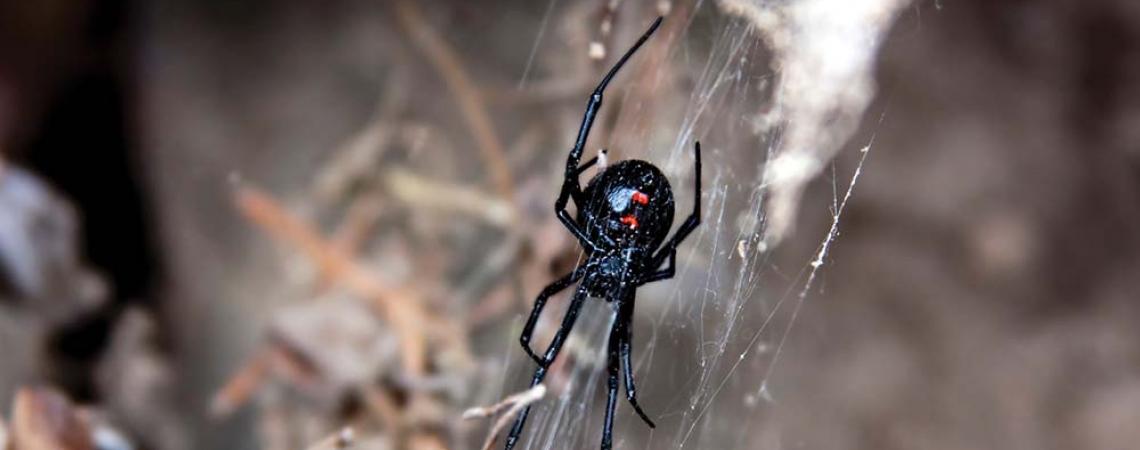Glacial ice and black widow spiders in Ohio — there’s a relationship.
Glaciers that retreated northward 10,000 years ago literally shaped Ohio’s land surface, leaving the southern and southwestern one-third of the state hilly, rocky, and well-drained — a characteristic preferred by black widow spiders. Ohio’s Appalachian Piedmont is home to probably the most feared spider in the U.S. While the spider is not common, it is most prevalent in Ohio, from Oxford to East Liverpool and the bow-shaped hilly piedmont along the Ohio River.
Black Widow Spider (Photo courtesy of: Jamesdvdsn/getty images)
Several species of widow spiders exist in North America, and Ohio has two of them: the Northern Black Widow and the Southern Black Widow — and the fear that we hold in our hearts for both of them is rational and deserved.
Black widow spiders produce a potent neurotoxin that has the potential to kill small children or the infirm. Before you break out the insecticide, however, do know that black widow bites are uncommon and fatalities from them are exquisitely rare. The effects from a bite are terribly uncomfortable, though. The pain comes on fast, and in healthy adults, subsides in a day or two.
My daughter, then 3 years old, was bitten by a black widow spider and within a few minutes, suffered severe abdominal muscle cramps and spasms. Her legs went limp. In minutes, a general weakness and listlessness ensued, and it all culminated in a two-day hospital stay.
While never in a grave condition, she was certainly in much pain. That pain was relieved with an antivenin derived from horse blood, reversing the effects of the toxin. It was remarkable to witness the near instantaneous reversal of visible symptoms when the medicine was administered.
Black widow spiders find habitat in nature in the crevices of sloped rocky soils. They are drawn to the dark voids beneath downed trees, rock piles, or natural rock shelves and overhangs. It’s there that they set up housekeeping in a distinctive web that is easy to identify. A black widow spider lurks in the shelter of shade in a web, waiting on bugs and other spiders to fall into the tangled mess. A “tangle” is perhaps the most apt description of the web — it’s shapeless, just a twisted confused mass of heavy silken fibers up to a foot wide, most often near the ground. There’s no elegance in the design like you find in other spider webs. Black widows possess a bulbous, engorged shiny jet-black abdomen, ornamented with a red hourglass marking, sometimes appearing as two red dots.
Prevention is the better medicine than an antivenin. Keeping a clean home and outbuildings free of debris and piles of rotting wood makes your abode less amenable to black widows, as well as unwelcoming to their favored fare. The toxic spider is drawn to undisturbed and cluttered areas in basements and barns.
Black widows certainly have their place in nature; they are best kept there.











